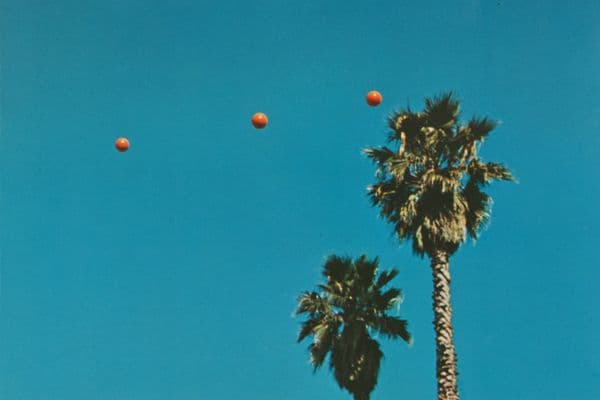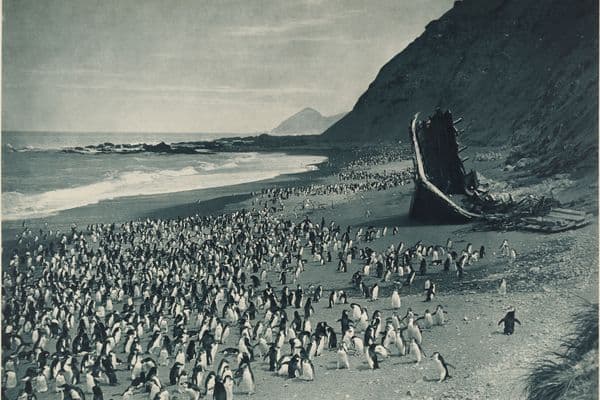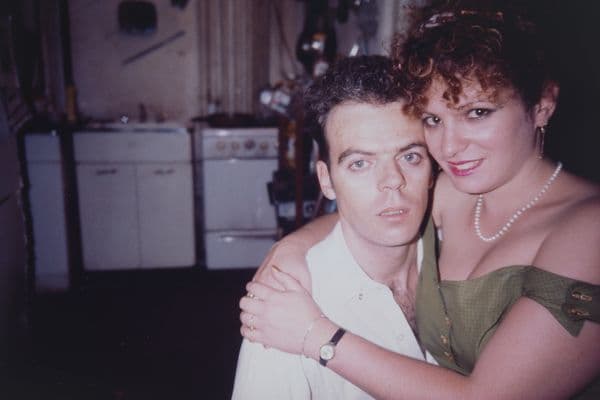The Glamour Show
Studio Photographs 1925–1955
10 May 1986 – 14 Sep 1986

Paul Outerbridge, Woman with fan, c. 1936, National Gallery of Australia, Kamberri/Canberra, Purchased 1979.
About
This is an exhibition of glamorous and seductive images. On display are film-star and celebrity portraits, advertising and fashion photographs and surreal studies, all of which were specially set up in the studio for the camera. These photographs are not of the world as we know it, but of a staged and constructed reality. Signs of the photographer's artifice include studio sets, props, special lighting, the use of models, unusual printing techniques, retouching and handcolouring.
The photographs in The Glamour Show were not produced for the viewer's innocent pleasure but as an invitation to consume the products they advertised.
Exhibition Pamphlet Essay
The modern advertising industry was born in the 1920s. Rapid industrial growth in Europe, the United States and Australia created a demand for new methods of marketing consumer goods, one of which was photography. Commercial photographic studios proliferated, and the photographer became firmly established in the advertising and publicity industries.
The commercial studios practised a style based on what is now termed the New Photography, which was developed in the 1920s by avant-garde artists, especially in the USSR and Germany. These artists evolved new strategies — among them the use of sharp focus, unusual and dramatic points of view, such as the upshot, downshot and close-up, and the arrangement of compositions into bold, simplified forms — to express their vision of a new society, one which had been transformed through radical social change. Their utopian beliefs had been confirmed by the Russian Revolution in 1917 and by the possibility of a Socialist revolution in Germany in the 1920s.
The stylistic devices of the New Photography were also readily adapted to the presentation of commercial products and, divorced from their original political aims, were freely used by the advertising industry. American photographers were the unrivalled masters at marketing ‘a modern look’, but this ‘look’ was adopted by photographers all over the world, Australians included.
Hollywood, home of the star system, used photographs of film stars to publicize movies in magazines, on billboards and in theatre foyers. George Hurrell was based in Hollywood in the 1930s and photographed the famous stars of the time for MGM Studios, Twentieth Century Fox and Warner Brothers. The subjects of the photographs by Hurrell in this exhibition include Johnny Weissmuller, Olympic swimming champion and star of the 1932 Tarzan movie, Jean Harlow and Douglas Fairbanks Junior.
Hurrell’s images were taken under carefully controlled studio lighting to emphasize the sensuous surfaces of skin and hair. The actors, required by their profession to project an image, play to the camera. Their eyes, veiled with passion, entice us to enter a secret world (the forthcoming film) and to ‘consume’ them (as an image). Hurrell’s prints are warm-toned, and this contributes to their seductive appeal.
Other ‘stars’ in the exhibition are Katharine Hepburn and Marilyn Monroe. Australian photographer Athol Shmith’s hand-coloured portrait of film star Vivien Leigh involved considerable hand-work to give the image a romantic, otherworldly air. Celebrity portraits of the writer Edith Sitwell, the composer Sergei Rachmaninoff, and others, are also on display.
American photographer George Platt Lynes had his handsome young male models pose nude in the studio. They also appear as actors in Greek mythological tales, which Lynes employed as a means of legitimizing his interest in the male nude, a controversial issue at the time. It is only in recent years that Lynes’s homo-erotic work has awakened widespread interest. In his photographs the backdrops are plain and the theatrical studio lighting spotlights the subjects, focusing our attention on them.
Other nudes in the exhibition are by Edward Steichen and George Hoyningen-Huene. Like Hurrell, Hoyningen-Huene pays special attention to the sensuous surface of his model’s skin. His photograph of a young male nude simultaneously evokes visions of a classical Greek sculpture and Hitler’s ‘Aryan’ youths. Hoyningen-Huene was a major fashion and advertising photographer who worked for many years in France, his photographs being published in Paris Vogue and other magazines.
Australian photographer Max Dupain admired Hoyningen-Huene's work, and the two artists met when Hoyningen-Huene came to Australia in 1937. The Gallery is fortunate to have in its collection Advertisement for David Jones, Rural Bank, Martin Place, Sydney, a rare photograph taken by Hoyningen-Huene during his visit.
Edward Steichen also enjoyed an enormously successful commercial career. His advertisements for Kodak, four of which are on display, appeared in the magazine Saturday Evening Post during an extensive advertising campaign. Steichen's commercial photography is characterized by a naturalistic style which allows us to more easily put ourselves in the picture; nonetheless the photographs were carefully staged.
In contrast to Steichen's work, Baron de Meyer's advertising photograph for Elizabeth Arden does not look naturalistic and revels in its artificiality. Variations of this image were used in advertisements for Elizabeth Arden published in the 1930s in the Australian magazine The Home. Equally artificial are British photographer Angus McBean's unreal, dream-like images which were inspired by Surrealism. Like the New Photography, Surrealism was often invoked by artists wishing to present products in an unusual way.
Fashion photography has also been a large component of the advertising industry, and the exhibition includes fashion images by Steichen, Wynn Richards and others to highlight the various ways in which such photographs are constructed. Max Dupain's striking fashion photographs of the 1930s established his reputation as a daring and innovative commercial photographer. The works by Dupain on display are characterized by spare compositions and dramatic studio lighting.
Among the most sumptuous works in this exhibition are the colour photographs, particularly those by Paul Outerbridge. Outerbridge lived in Europe from 1925 to 1929, working largely as a free-lance photographer. When he returned to the United States he perfected the use of the carbro colour process, which produces rich, slightly lurid colours. Outerbridge is especially effective at breathing life into skin; the veins of his female models, slightly purplish with blood, are visible just beneath pale pink skin.
Outerbridge's works are fetishistic; the objects he photographs seem larger than life. His female models are sexual objects and playthings, nudes presented in voluptuous and mindless poses. Even toilet-paper is shown to be beautiful in Outerbridge's advertising image.
The highly charged qualities of colour photographs are used to great effect in Ruzzie Green's advertisement for the Crosley Shelvador refrigerator. The array of products, the brightness and variety of colours and the gleefuI looks of the potential owners offer us a treasure-trove of pure materialism.
Images such as these promise an easy life, for those with the looks and the money—a life whose passing is marked only by the never-ending parade of fabulous new products.
The photographs in The Glamour Show are quite conspicuous constructions. The world they put forward is unreal, and their glamorous presentation serves both to seduce and to captivate the viewer.











